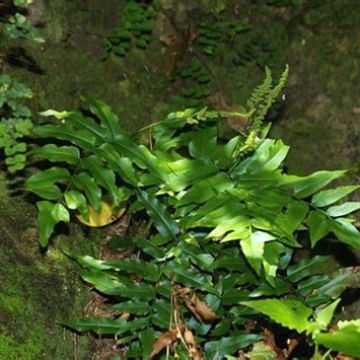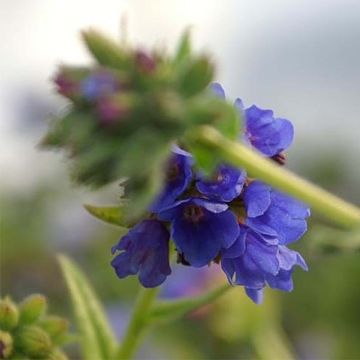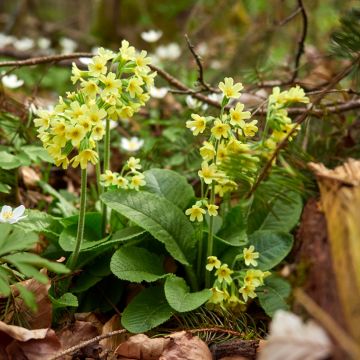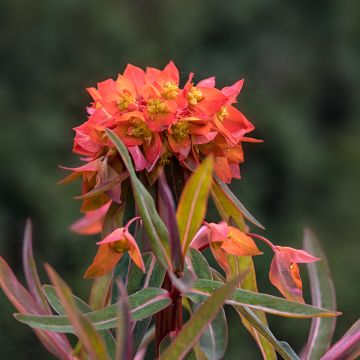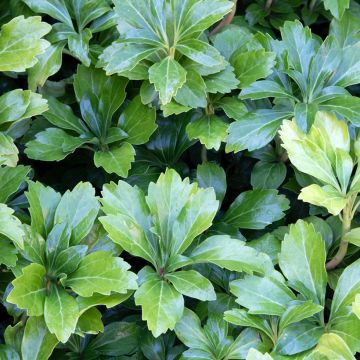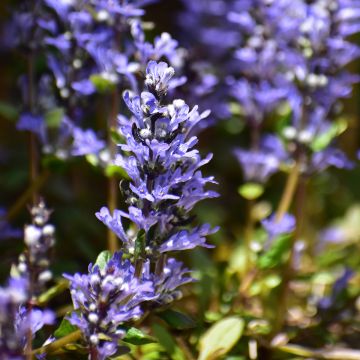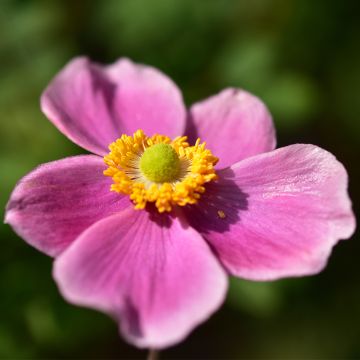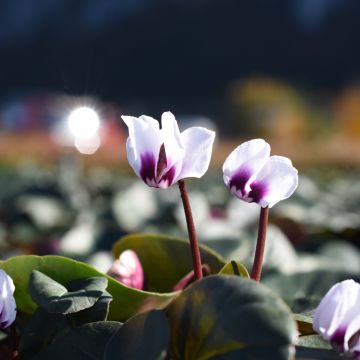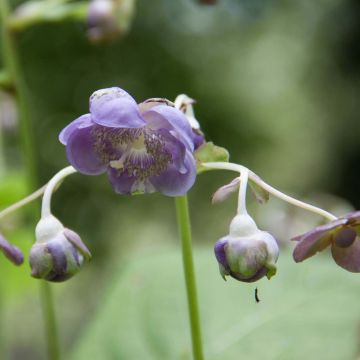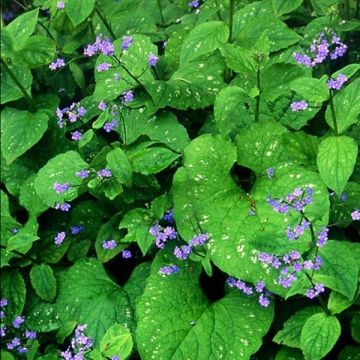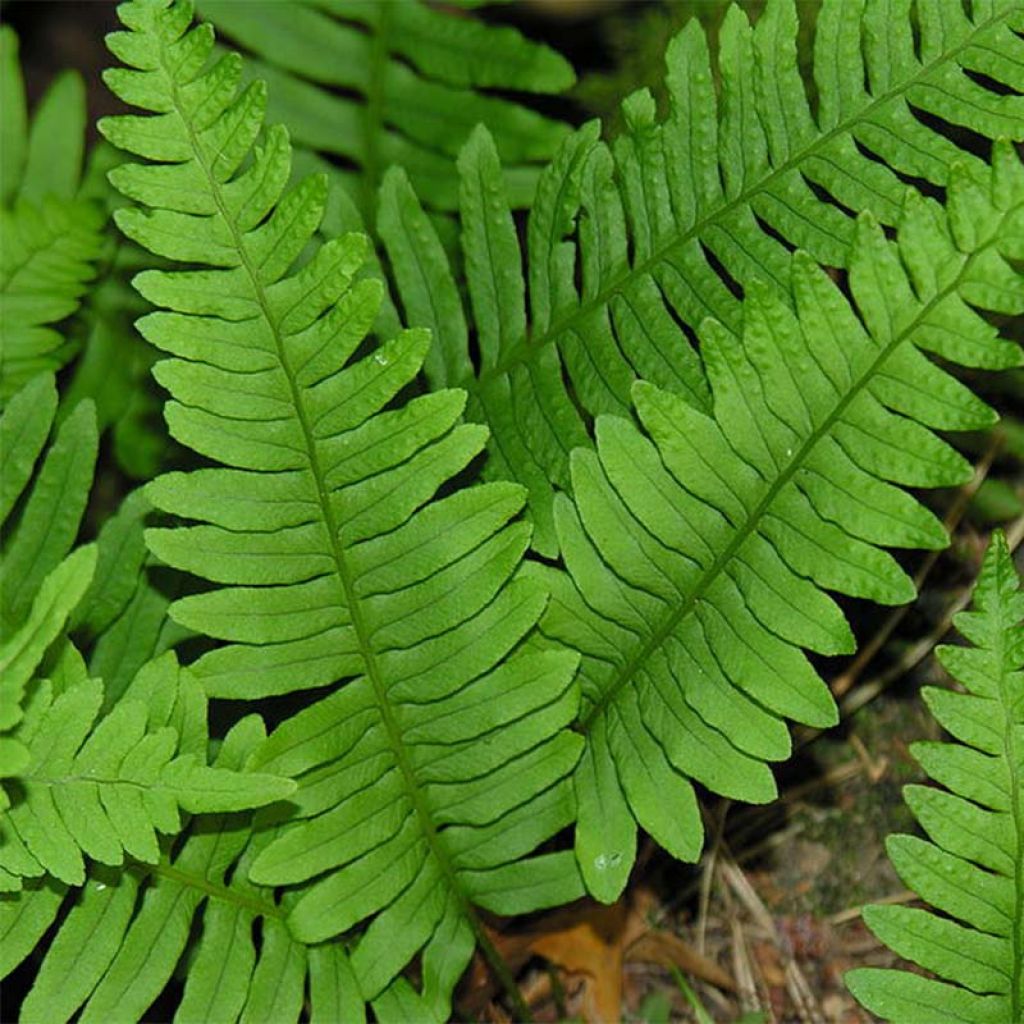

Polypodium vulgare - Rockcap Fern
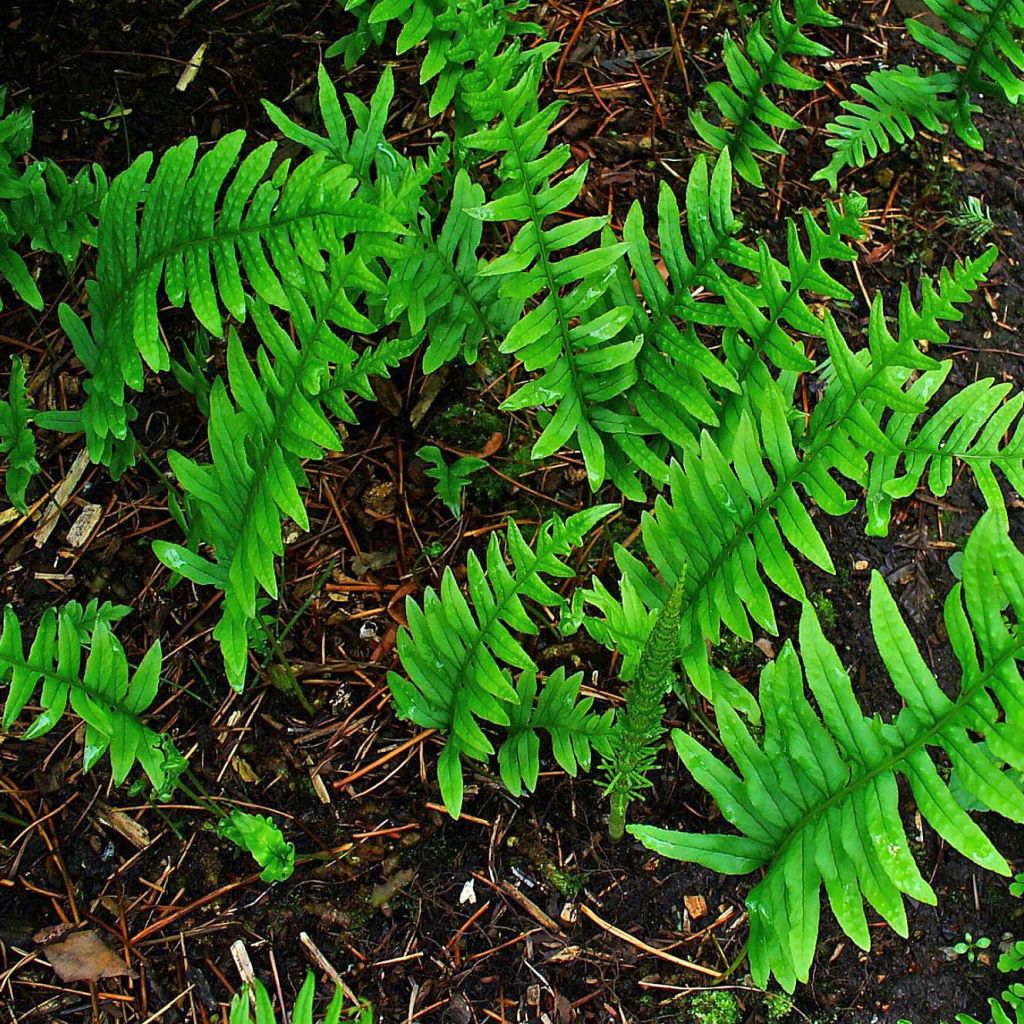

Polypodium vulgare - Rockcap Fern
Polypodium vulgare - Rockcap Fern
Polypodium vulgare
Common Polypody, Rockcap Fern, Crested Polypody
This item cannot be shipped to the selected country
Delivery charge from €5.90
More information
Schedule delivery date,
and select date in basket
This plant carries a 12 months recovery warranty
More information
We guarantee the quality of our plants for a full growing cycle, and will replace at our expense any plant that fails to recover under normal climatic and planting conditions.
From €5.90 for pickup delivery and €6.90 for home delivery
Express home delivery from €8.90.

Does this plant fit my garden?
Set up your Plantfit profile →
Description
Polypodium vulgare, the Common Polypody, is a lovely little evergreen fern that will remind many of us of old botany lessons. A reminiscence of our school trips to the forest, this species is very common and grows almost everywhere, covering any available surface with its green lacework, even settling in the fertile pockets formed in the hollows of trees or between rocks. It gradually colonises a semi-shaded or shaded area through its wandering rhizome, from which narrow and dissected fronds of spring green emerge. Very easy to grow in any moist or even dry soil that is not too chalky, this worry-free fern is perfect in a rural setting or in a small Japanese scene.
Polypodium vulgare is part of a large group of plants called polypody ferns, which are terrestrial, epiphytic, or even lithophytic species, very common in the temperate northern hemisphere, belonging to the Polypodiaceae family. Polypodium vulgare can be found up to an altitude of 2200 m (7200 ft). It is found in Scandinavia, the Carpathians, and North America. Its natural habitat consists of rocky undergrowth, old walls, cracks between rocks, and the base of certain tree trunks, but rarely in limestone soil.
This very hardy perennial fern grows from a fleshy, curiously sweet rhizome, covered with reddish scales. Capable of spreading on very different supports, its growth is quite slow. An adult plant will form a 25 cm (10 in) high carpet, covering an area of 50 cm² (7.8 in²). The foliage is composed of narrow, lanceolate fronds, very divided around a slender rachis. The plant produces sori (small sacs containing spores) throughout the year. They take the form of small warts of 2 mm (0.1 in) in diameter, orange in colour, located on the underside of the leaves.
Among the ferns of temperate zones, this one is undoubtedly the easiest to grow. Without causing any worries other than planting it, the common polypody has its place in the garden, bordering a rural hedge in the company of Meconopsis cambrica, or on a shaded slope where nothing grows, in the company of a pretty, variegated ivy (Hedera helix 'Variegata'). It can also be associated with helxine, eucomis, hostas, hydrangeas, and shrubby fuchsias, always in filtered light or shade. A tiny garden with a very Japanese spirit can also be created by combining it with round stones and mosses, or with a painted Japanese fern (Athyrium niponicum 'Pictum').
Report an error about the product description
Polypodium vulgare - Rockcap Fern in pictures
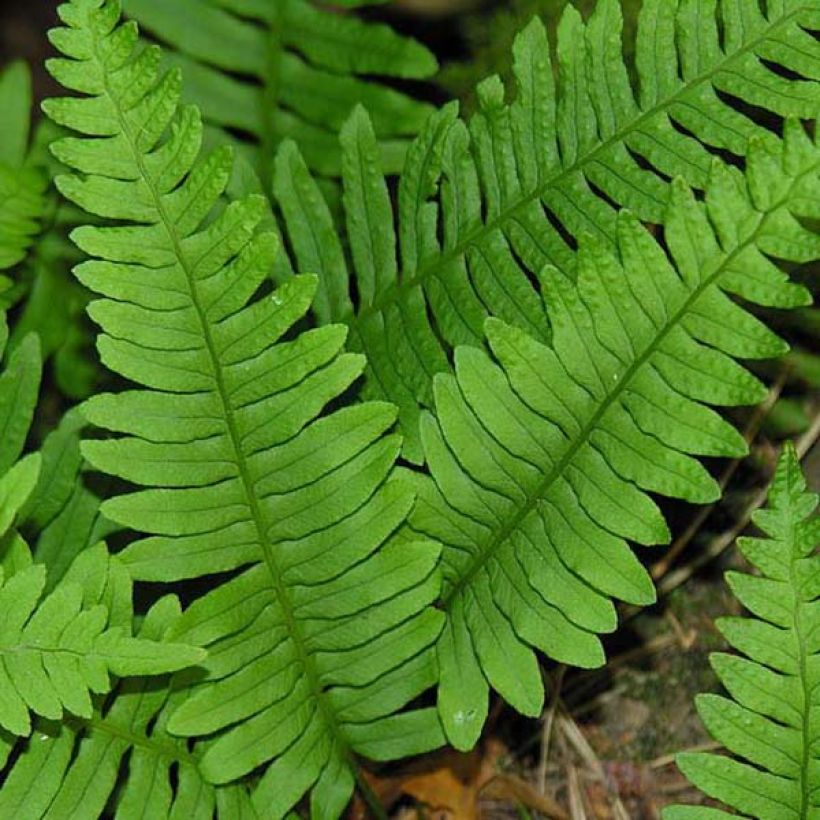

Foliage
Plant habit
Botanical data
Polypodium
vulgare
Polypodiaceae
Common Polypody, Rockcap Fern, Crested Polypody
Western Europe
Other Polypodium
Planting and care
Polypodium vulgare is a fern that is easy to grow in any moist to dry, humus-rich or sandy soil that is not too chalky. Like many ferns, it appreciates dappled sunlight, partial shade or even full shade. It will particularly thrive on the edge of a grove or in undergrowth, in a shaded rockery, facing east or north. This small plant is not invasive and does not require any other maintenance.
Planting period
Intended location
Care
-
, onOrder confirmed
Reply from on Promesse de fleurs
Shade-loving perennials
Haven't found what you were looking for?
Hardiness is the lowest winter temperature a plant can endure without suffering serious damage or even dying. However, hardiness is affected by location (a sheltered area, such as a patio), protection (winter cover) and soil type (hardiness is improved by well-drained soil).

Photo Sharing Terms & Conditions
In order to encourage gardeners to interact and share their experiences, Promesse de fleurs offers various media enabling content to be uploaded onto its Site - in particular via the ‘Photo sharing’ module.
The User agrees to refrain from:
- Posting any content that is illegal, prejudicial, insulting, racist, inciteful to hatred, revisionist, contrary to public decency, that infringes on privacy or on the privacy rights of third parties, in particular the publicity rights of persons and goods, intellectual property rights, or the right to privacy.
- Submitting content on behalf of a third party;
- Impersonate the identity of a third party and/or publish any personal information about a third party;
In general, the User undertakes to refrain from any unethical behaviour.
All Content (in particular text, comments, files, images, photos, videos, creative works, etc.), which may be subject to property or intellectual property rights, image or other private rights, shall remain the property of the User, subject to the limited rights granted by the terms of the licence granted by Promesse de fleurs as stated below. Users are at liberty to publish or not to publish such Content on the Site, notably via the ‘Photo Sharing’ facility, and accept that this Content shall be made public and freely accessible, notably on the Internet.
Users further acknowledge, undertake to have ,and guarantee that they hold all necessary rights and permissions to publish such material on the Site, in particular with regard to the legislation in force pertaining to any privacy, property, intellectual property, image, or contractual rights, or rights of any other nature. By publishing such Content on the Site, Users acknowledge accepting full liability as publishers of the Content within the meaning of the law, and grant Promesse de fleurs, free of charge, an inclusive, worldwide licence for the said Content for the entire duration of its publication, including all reproduction, representation, up/downloading, displaying, performing, transmission, and storage rights.
Users also grant permission for their name to be linked to the Content and accept that this link may not always be made available.
By engaging in posting material, Users consent to their Content becoming automatically accessible on the Internet, in particular on other sites and/or blogs and/or web pages of the Promesse de fleurs site, including in particular social pages and the Promesse de fleurs catalogue.
Users may secure the removal of entrusted content free of charge by issuing a simple request via our contact form.
The flowering period indicated on our website applies to countries and regions located in USDA zone 8 (France, the United Kingdom, Ireland, the Netherlands, etc.)
It will vary according to where you live:
- In zones 9 to 10 (Italy, Spain, Greece, etc.), flowering will occur about 2 to 4 weeks earlier.
- In zones 6 to 7 (Germany, Poland, Slovenia, and lower mountainous regions), flowering will be delayed by 2 to 3 weeks.
- In zone 5 (Central Europe, Scandinavia), blooming will be delayed by 3 to 5 weeks.
In temperate climates, pruning of spring-flowering shrubs (forsythia, spireas, etc.) should be done just after flowering.
Pruning of summer-flowering shrubs (Indian Lilac, Perovskia, etc.) can be done in winter or spring.
In cold regions as well as with frost-sensitive plants, avoid pruning too early when severe frosts may still occur.
The planting period indicated on our website applies to countries and regions located in USDA zone 8 (France, United Kingdom, Ireland, Netherlands).
It will vary according to where you live:
- In Mediterranean zones (Marseille, Madrid, Milan, etc.), autumn and winter are the best planting periods.
- In continental zones (Strasbourg, Munich, Vienna, etc.), delay planting by 2 to 3 weeks in spring and bring it forward by 2 to 4 weeks in autumn.
- In mountainous regions (the Alps, Pyrenees, Carpathians, etc.), it is best to plant in late spring (May-June) or late summer (August-September).
The harvesting period indicated on our website applies to countries and regions in USDA zone 8 (France, England, Ireland, the Netherlands).
In colder areas (Scandinavia, Poland, Austria...) fruit and vegetable harvests are likely to be delayed by 3-4 weeks.
In warmer areas (Italy, Spain, Greece, etc.), harvesting will probably take place earlier, depending on weather conditions.
The sowing periods indicated on our website apply to countries and regions within USDA Zone 8 (France, UK, Ireland, Netherlands).
In colder areas (Scandinavia, Poland, Austria...), delay any outdoor sowing by 3-4 weeks, or sow under glass.
In warmer climes (Italy, Spain, Greece, etc.), bring outdoor sowing forward by a few weeks.


































